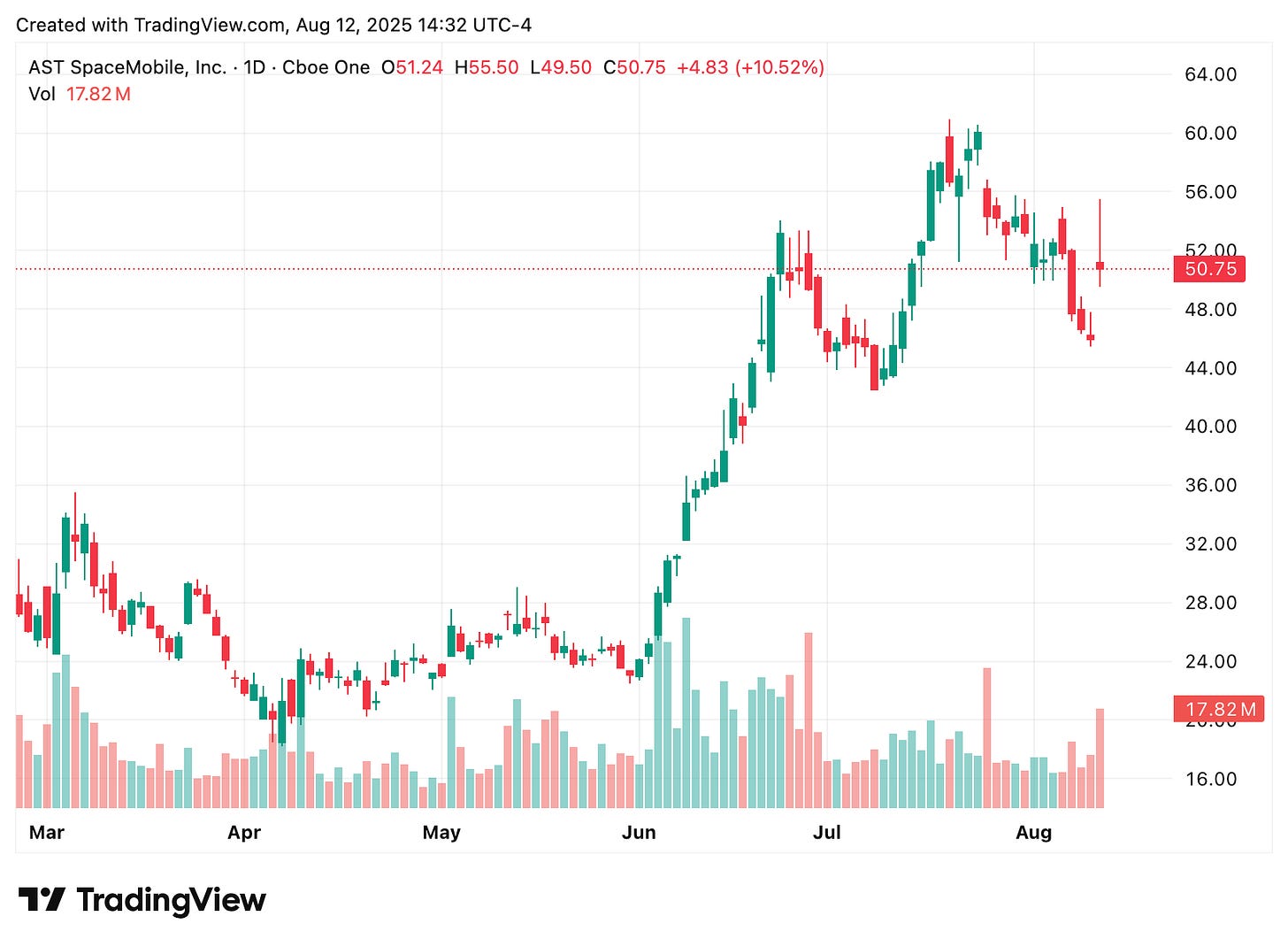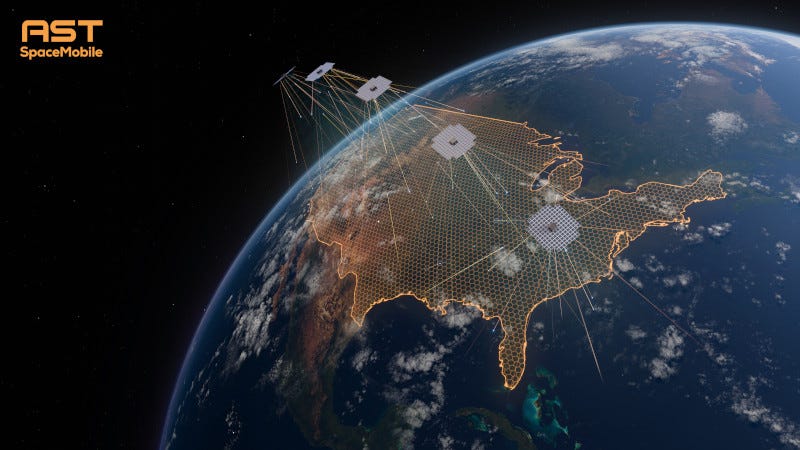AST SpaceMobile Plans to Deploy 45-60 Satellites by 2026
Has Reached Partnership Agreements With 50 Mobile Network Operators
The satellite company building what it says will be the first space-based cellular network reported strong progress toward commercial service launch during its second quarter earnings update. AST SpaceMobile expects to deploy between 45 and 60 satellites by 2026 to provide continuous coverage across the United States, Europe, Japan and other strategic markets.
"We are confirming our fully-funded plan to deploy 45 to 60 satellites into orbit by 2026 to support continuous service in the U.S., Europe, Japan, and other strategic markets, including the U.S. Government."
Abel Avellan, AST SpaceMobile
The Texas-based company currently operates six satellites in orbit, with five fully operational. Company leadership outlined plans for nationwide intermittent service in the United States by the end of 2025, followed by launches in the United Kingdom, Japan and Canada during the first quarter of 2026.
AST SpaceMobile expects revenue between $50 million and $75 million during the second half of 2025 from government and commercial customers. The company has completed assembly of components for eight Block 2 BlueBird satellites and plans to finish building equivalent components for 40 satellites by early 2026.
The satellite network aims to provide high-speed internet directly to standard smartphones without requiring special equipment or modifications. Peak data rates could reach up to 120 Mbps per cell globally, according to company projections backed by more than 3,700 patents and patent applications.
“We are confirming our fully-funded plan to deploy 45 to 60 satellites into orbit by 2026 to support continuous service in the US, Europe, Japan, and other strategic markets, including the U.S. Government. We also have planned orbital launches every one to two months on average during 2025 and 2026,” commented Abel Avellan, Founder, Chairman and CEO of AST SpaceMobile. “In orbit today, we have six satellites, five fully operational and one test satellite, for both commercial and government applications. We have completed the assembly of microns for phased arrays of eight Block 2 BlueBird satellites, and we are on target to complete 40 satellites equivalent of microns by early 2026 to support full voice, data, and video space-based cellular broadband services.”
Recent spectrum acquisitions have strengthened the company's position within the wireless industry. AST SpaceMobile secured rights to 60 MHz of global S-Band spectrum and received court approval for long-term access to up to 45 MHz of L-Band spectrum in the United States and Canada, pending regulatory approvals.

The company has expanded its manufacturing footprint to over 400,000 square feet across Texas, Europe and other global locations, supported by a workforce exceeding 1,200 people. With 95% vertical integration, the company maintains significant control over its production processes.
Partnership agreements now cover more than 50 mobile network operators globally, representing nearly 3 billion existing subscribers. Notable partnerships include Vi in India for expanding space-based connectivity solutions and SatCo, a jointly-owned European entity with Vodafone that has received interest from operators in 21 of 27 European Union member states.
The company demonstrated its first tactical non-terrestrial network connectivity over standard mobile devices with participation from multiple branches of U.S. armed forces under a Defense Innovation Unit contract. Eight total contracts have been signed with the U.S. Government as end customer.
Financial highlights show the company maintained $939.4 million in cash, cash equivalents and restricted cash as of June 30, 2025. Total operating expenses for the second quarter reached $74.0 million, representing a $10.3 million increase from the first quarter primarily due to higher administrative costs.
AST SpaceMobile raised $575 million in gross proceeds through a seven-year convertible senior notes offering with a 2.375% coupon rate. The company also secured $100 million in equipment financing and a non-recourse term loan to fund $550 million in spectrum payments due upon Federal Communications Commission approval.
The seventh satellite, FM1, is expected to ship in August 2025 with a launch date to be determined. Orbital launches are planned every one to two months on average through 2025 and 2026 to meet the deployment timeline.





